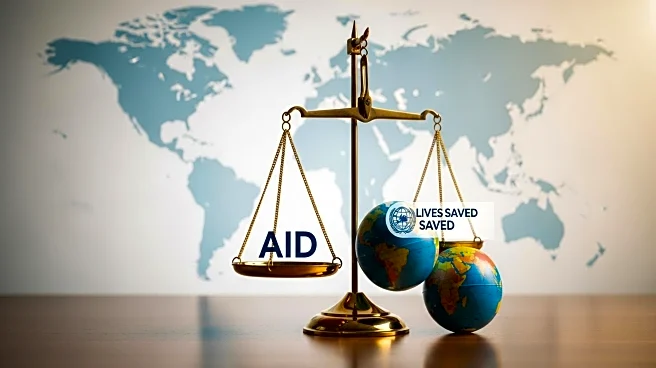What is the story about?
What's Happening?
The United States has been the largest donor of foreign aid, contributing $62 billion in 2023 alone. Programs like the President’s Emergency Plan for AIDS Relief (PEPFAR) have been instrumental in saving lives, particularly in Sub-Saharan Africa. PEPFAR has provided antiretroviral therapy to over 20 million people globally, significantly reducing HIV/AIDS transmission and deaths. Other initiatives, such as the President’s Malaria Initiative, have also contributed to declines in malaria deaths. Estimates suggest that U.S. foreign aid saves approximately three million lives annually, though the exact number is difficult to determine due to data limitations.
Why It's Important?
U.S. foreign aid plays a crucial role in global health, contributing to significant reductions in disease-related deaths and improving health outcomes in low-income countries. The aid not only saves lives but also fosters economic growth and stability in recipient countries. However, recent cuts to aid programs, including the dismantling of USAID, threaten these achievements and could lead to increased mortality rates. Public perception of foreign aid spending is often inflated, which affects support for these programs. Educating the public on the actual costs and benefits of foreign aid could influence policy decisions and maintain support for life-saving initiatives.
AI Generated Content
Do you find this article useful?















